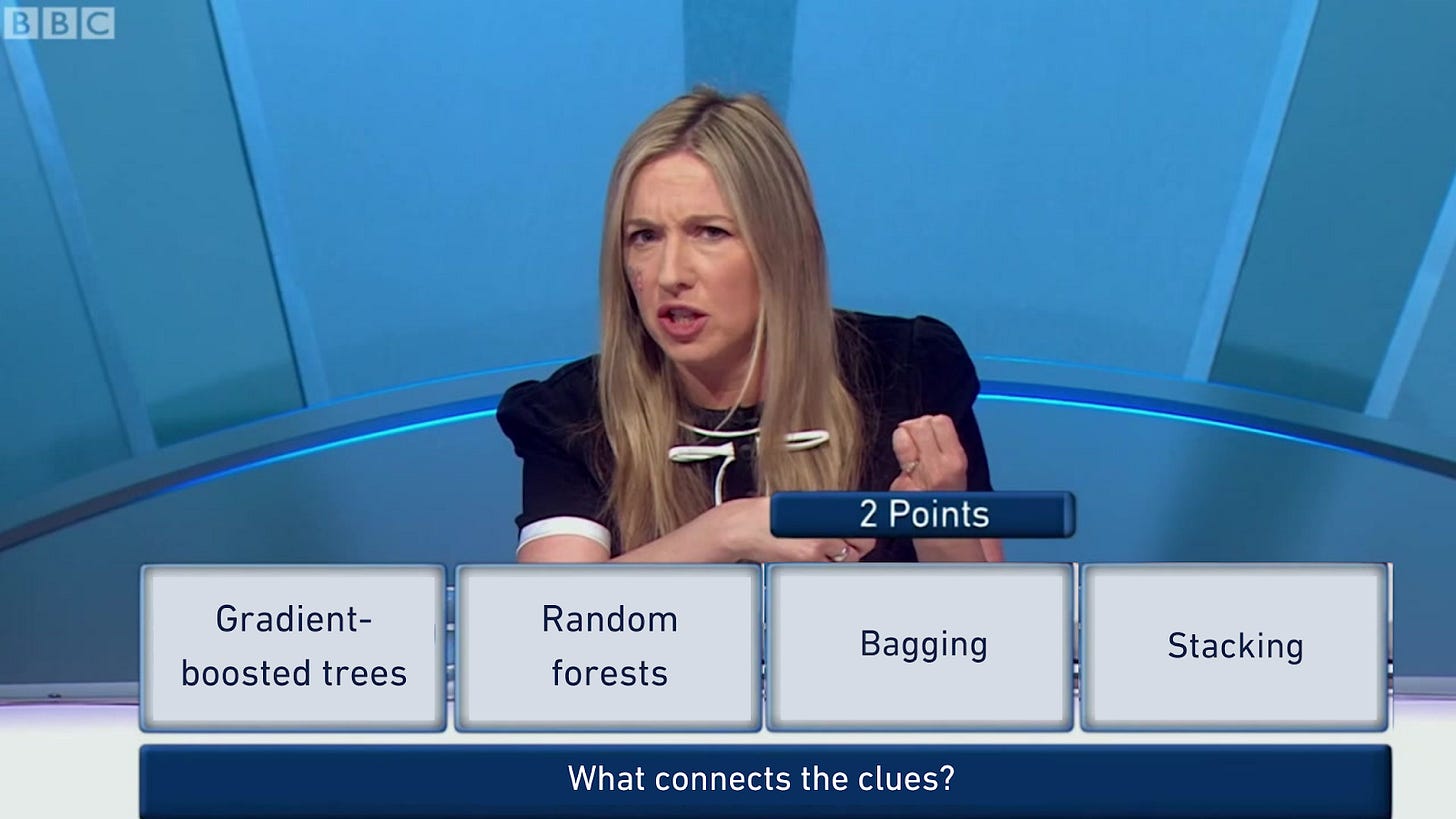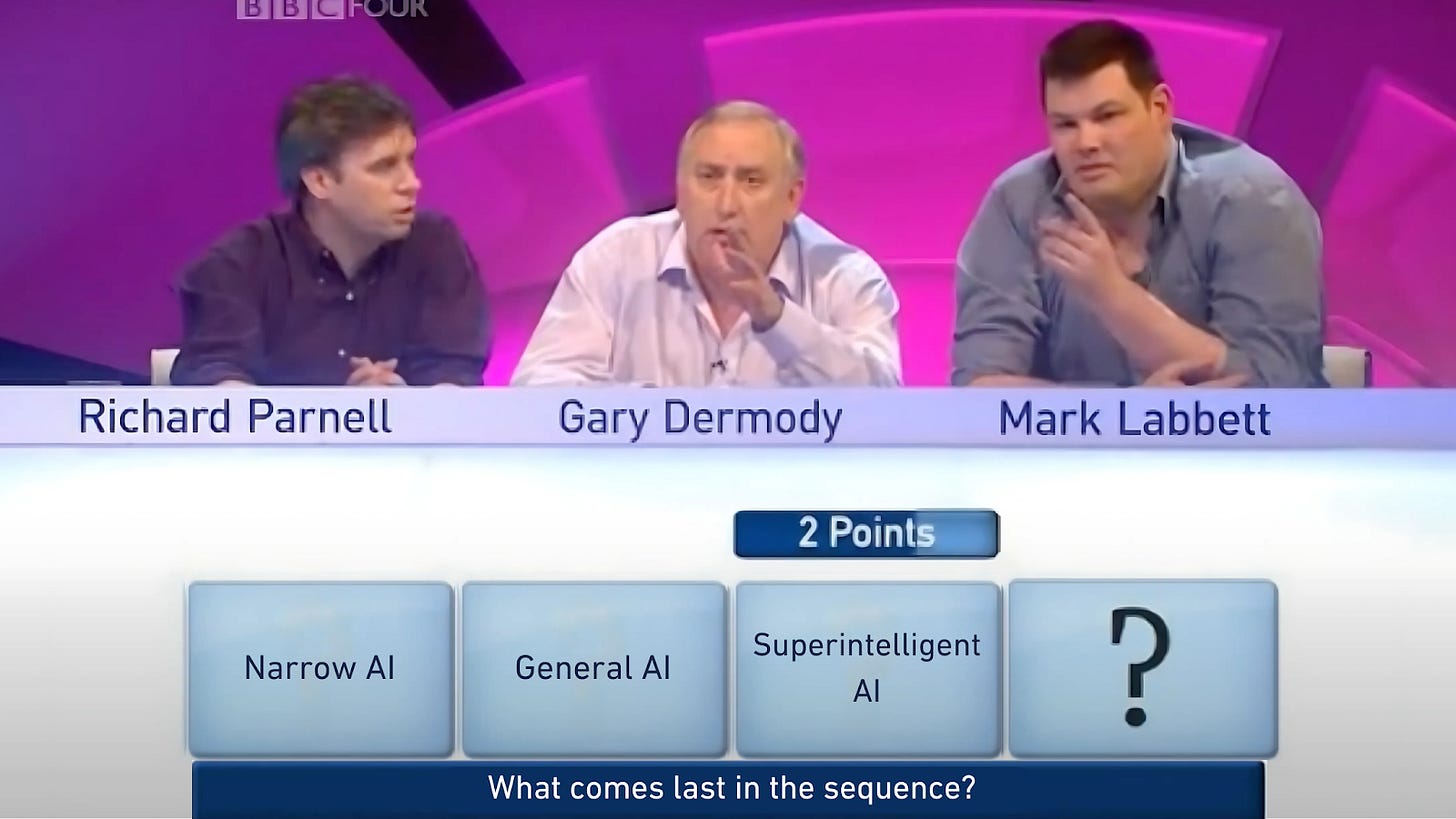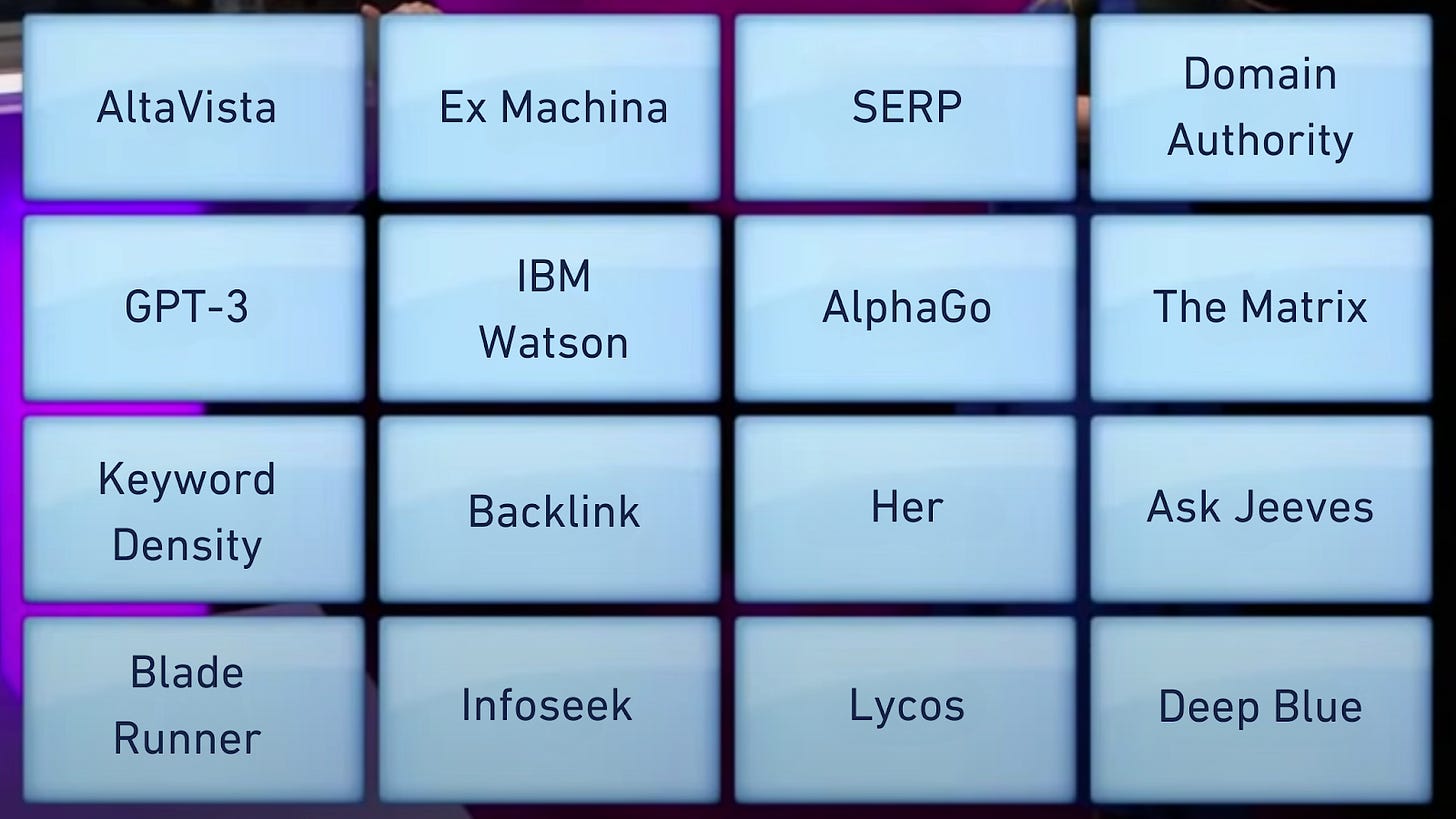What we lose when we write with AI, and why I still use it as a content marketer.
[Guest post 👋🏼] How finding AI's place has made me a more intentional content writer. Stéphanie is looking for new opportunities, if you like her content please reach out via LinkedIn.
[This is a guest post from Stéphanie Quadranti, who specialises in SEO & Content Marketing.]
I’ve written about everything from decarbonisation and electric vehicles, to real estate investing, co-working, and coffee shops. If there’s one constant across it all, it’s this: in a sea of sameness, authority and authenticity matter.
But at a time when AI can create tens of articles in the time it takes to boil a kettle, we have to ask ourselves some important questions, as writers and readers. What's actually lost in purely AI-written content? And how do we adapt whilst preserving distinctiveness and insight?
This question has stayed with me as I’ve gone back and forth with AI in my content writing, experimenting with where it fits and where it doesn’t—a process I’ll be sharing here.
AI as the new “Mechanical Reproduction”
In The Work of Art in the Age of Mechanical Reproduction, Walter Benjamin argued that when art is reproduced, it loses its "aura"—its authenticity and unique connection to the creator. In many ways, AI mirrors this effect—mass-producing content that resembles writing, yet lacks the intangible qualities that human creativity offers. AI can generate blog posts, newsletters, landing pages, ad copy, detailed guides and articles in minutes, but at what cost?
Adam Roberts, a science fiction and fantasy novelist, expands on this idea, suggesting that much of writing is an instinctive, subconscious process. Roberts explains that writers often don’t consciously plan every detail; rather, ideas and images “feel right, ” emerging spontaneously without clear origin. This instinctual part of writing—the “aura” that Benjamin spoke of—can’t be replicated by AI because it lacks the subconscious impulse that fuels human creativity.
AI, trained on vast data and structured algorithms, may seem to mimic spontaneity, but it’s ultimately a mechanical process. Roberts points out that even though AI can generate text that appears fluent, it’s fundamentally different from a writer’s first draft, which captures raw inspiration that is later honed and refined.
This distinction matters because, like Benjamin’s reproduction theory, it underscores what’s lost when creation becomes mechanical: the unique, untraceable intuition that makes each piece of writing distinct. For writers, AI can be a useful tool, but it should be handled with awareness of its limitations. By consciously guiding AI, we retain the depth and individuality that make human-driven content irreplaceable.

Preserving the aura of content in an AI-driven world
Last year, I moved from London to Cotignac, a small village in the South of France. There are a lot of craftspeople here, and my partner—a bicycle framebuilder—is one of them. Watching his process made me think about what’s gained in artisanal creations versus what’s lost when production is purely mechanical. I’d often ask him, “Why not just use a machine for that?”
Well, there’s a unique aura around a hand-built bicycle frame—something that only comes from the process itself and the framebuilder behind it. A solo framebuilder, hand-mitering steel tubes, welding each joint, and handling quality control at every stage, puts out around 15 frames a year. Every frame reflects their choices, attention to detail, and commitment to quality. The result is a bicycle that feels like an extension of its creator, its authenticity intact from source to final product.
Now, contrast this with a larger, industrial frame shop, where the vision belongs to a company, and production is handled by machines. Here, frames are mass-produced, quality control is automated, and craftsmanship often takes a backseat. You might end up with tens of thousands of frames, but imperfections slip through more easily, and there’s less connection between the maker and the final product. The frames have lost something personal, a piece of their essence in the rush to scale. They still serve a purpose, but the experience of riding one lacks that original “aura.”

In some way, this mirrors content created entirely by AI. When the process—from ideation to execution—relies on algorithms, you get output at scale, but it’s hard to capture the nuance and intention that makes content resonate. Plus, you lose the (painful) process of writing, editing, scrapping your favourite ideas that just didn’t work, and starting over—something we know is actually the ‘type two fun’ for writers that keeps us going!
Whether I’m writing about decarbonisation or institutional real estate, I’m not just sharing information—I’m trying to shape how the reader perceives the subject. Human writers play the role of curators, ensuring that the content speaks to its intended audience with authority and clarity.

What about AI for SEO content?
For early stage ventures, SEO can feel like an investment with delayed rewards—a long game that’s easy to set aside in favour of immediate needs. This reality, coupled with the time and knowledge required, makes the idea of using AI to ‘solve’ SEO content especially tempting. However, the assumption that AI alone can drive results at scale often leads to content that is technically optimised but ultimately lacks the depth and specificity that both readers and search engines value. Interestingly, Neil Patel, a digital marketing expert, and his team ran a test, and the results suggested the following: AI-generated content still underperforms compared to human-driven pieces. By month 5, human-generated content had 5.44X more traffic per month than the AI-generated content. While AI can streamline production, it rarely produces content that engages meaningfully or ranks sustainably over time. Instead, search algorithms continue to favour original, well-researched material that reflects real expertise and brings something distinctive to the table.
So—the writer and content strategist in me breathes a big sigh of relief—it would seem that we still need the humans to write—and rank! Even Google prefers content that’s original, informative, and grounded in real expertise. Rather than recycling the same old narratives or simply cramming in keywords, search engines increasingly favour content that offers fresh insights and true value to readers.
Often, instead of just prompting AI to create a bunch of new content, a better strategy is to revisit, reformat and refresh high-impact articles. Slightly less exciting, yes. But these updates breathe new life into top-performing posts, keeping them relevant and search engine-friendly. And for new content, length and depth can play a critical role. In-depth articles—generally around 1500-2,500 words—tend to perform better because they give readers a full understanding of the topic, reducing the need to go looking somewhere else for more information.
The reality is that content quality outpaces quantity every time. Content that lacks depth or offers little value—like duplicate, keyword-stuffed, or thin content—often results in consistently poor search engine rankings and user engagement. Covering ideas comprehensively doesn’t just improve ranking potential but can lead to higher conversion rates as well, as readers are more likely to trust and engage with your content when all their questions are answered in one place.
I realise that this can all sound like I’m dismissing AI—that’s not the intention. In the end, it’s about knowing where to let AI assist and where to take over, preserving the authenticity of the work in a way that resonates with readers.

So, have I used AI to write this article?
In my content writing process, AI has become this kind of silent partner. It doesn’t replace any steps for me; it just changes how I approach them. For this article, though, AI hasn’t done any of the writing. For these kinds of pieces, which merit depth and perspective, I use its guidance but retain all creative agency.
But this is a big question for content writers: how and where should we use AI, if at all? Here’s how I go about it.
Thought Leadership Content
When I write thought leadership pieces, I like to treat AI like a friendly assistant or a colleague. It’s not human, but there’s a practical element to working with it. Here’s a breakdown of my usual approach:
Initial Thoughts: I usually brainstorm ideas away from my desk, while I’m out walking, running, or cycling—so I save them on my phone.
Research: Back home, I research these ideas. I want to know who else has explored them, and if there’s any major research or perspective that could add depth. At this stage,I’m gathering everything I find intriguing.
Structure Outline: After a solid base of research, I turn to ChatGPT. I feed it my initial notes and URLs from articles I found interesting, then ask what it thinks: Which points stand out? How might it structure an article around these topics? I give it specific URLs—anything from news articles to scholarly pieces—and ask for summaries. These summaries help me pinpoint what’s worth exploring further, and ChatGPT’s take sometimes highlights angles I hadn’t considered yet.
First Draft: From here, I start drafting everything that comes to mind.
Feedback and Proofreading: After drafting, I edit and feed the piece back into ChatGPT , asking it: "What do you think? Is it clear? Does it make sense? How could it be better?". The feedback here is more like talking through ideas with someone else. ChatGPT’s responses might be simple but give me a fresh perspective, letting my mind move on to higher-level ideas. Sometimes, even a single word from its feedback can trigger a new direction for a sentence or paragraph.
Final Edits: I do another round of personal edits and finalise the article.
SEO Content
When I’m working on content that’s more geared towards SEO—things like listicles or guides—ChatGPT helps me to find the right balance of detail and efficiency. I give it context, check its output, and refine its suggestions rather than taking everything at face value. Treating it as an interactive tool rather than a perfect solution lets me get the most out of it. Just as I wouldn’t blindly trust another writer’s draft without review, I don’t expect ChatGPT’s output to be flawless.
Planning and Keywords: I begin with the basics—defining the topic, and keywords.
Training AI with Samples: Over time, I’ve given ChatGPT specific examples of my writing,including preferred tones, styles. This way, it’s primed to understand the voice and structure I need.
Drafting: I use ChatGPT to draft the initial structure, ensuring each part aligns with the SEO goals. I’ll adjust the language as needed for better fit, but it’s streamlined.
Review and Optimization: After drafting, I manually check the SEO elements—meta descriptions, headers, and keywords—and refine them to ensure the content meets both search engine and reader needs.
Final Quality Check: As with my thought-leadership process, I finalise the content to make sure it’s clear, relevant, and aligns with the brand voice.
Like with many things, if we don’t adapt, we get left behind. By working AI into my process, I’m learning where it fits, where it doesn’t, and hopefully getting a better sense of how it could shape the way I approach content writing down the line.

Bettering, not replacing, human creativity
While AI has undeniable strengths—speed, scale, and data-driven insights—it falls short when it comes to curating meaning. Content writing, particularly in fields that require authority and depth, is more than just assembling the right keywords. It's about constructing a narrative that resonates with the audience on a personal level.
Rather than view it as a replacement, we should see it as a pretty useful and—for the most part—easily trainable assistant. By taking care of the more mechanical aspects of content production—like SEO optimization, data analysis, and content scheduling—AI frees up writers to focus on what they do best: telling stories that resonate.
The challenge for founders and early-stage operators is finding the right balance. Use AI to scale and optimise, but let human writers curate, contextualise, and bring meaning to the content. In the end, content creation has to remain an art form—and while AI can assist, it’s up to us to ensure that the aura of our work remains intact.
PS - Here’s a link to Walter Benjamin's full essay. It’s worth a read—there’s a lot more to his ideas than I’ve touched on here.

